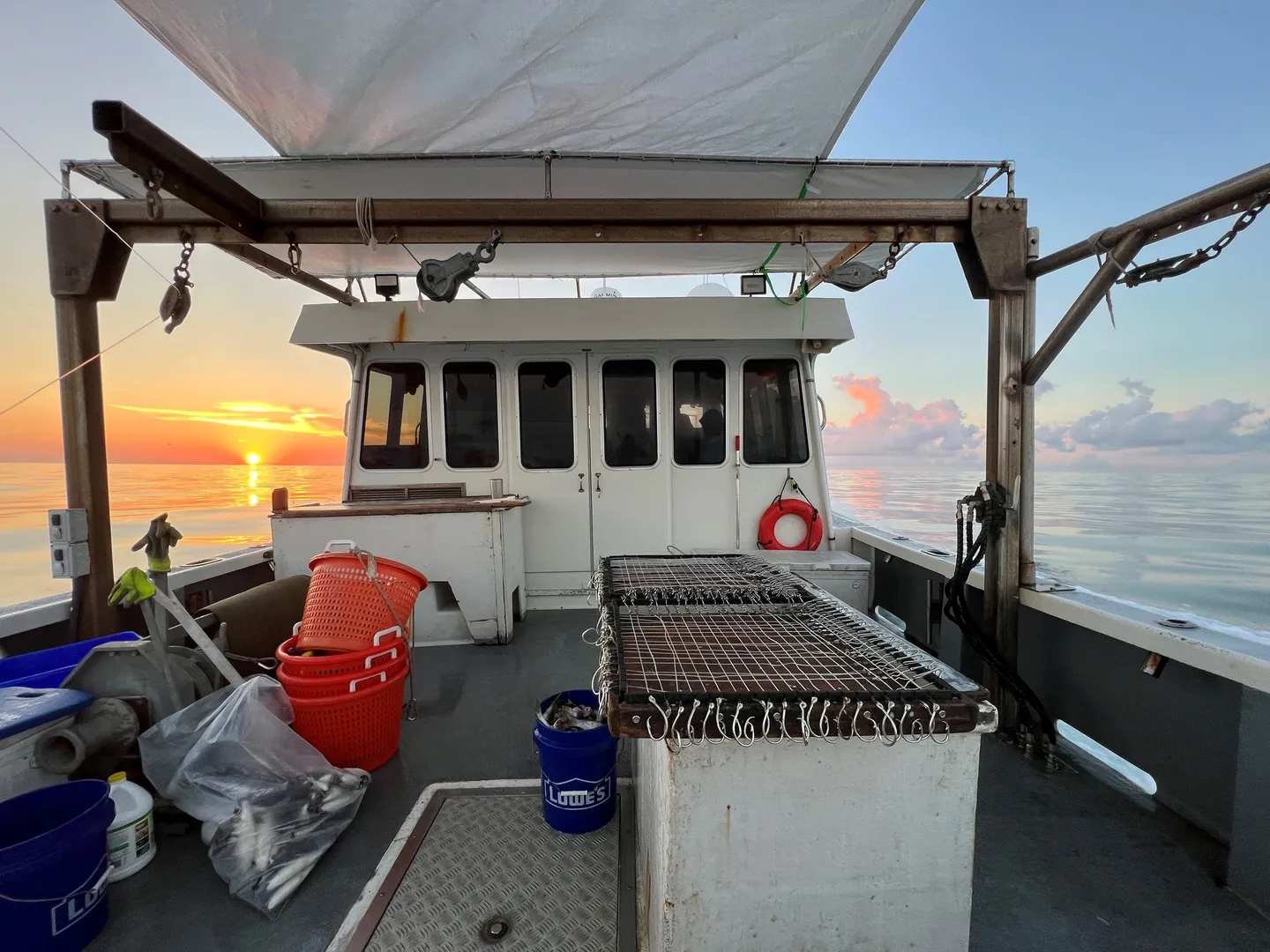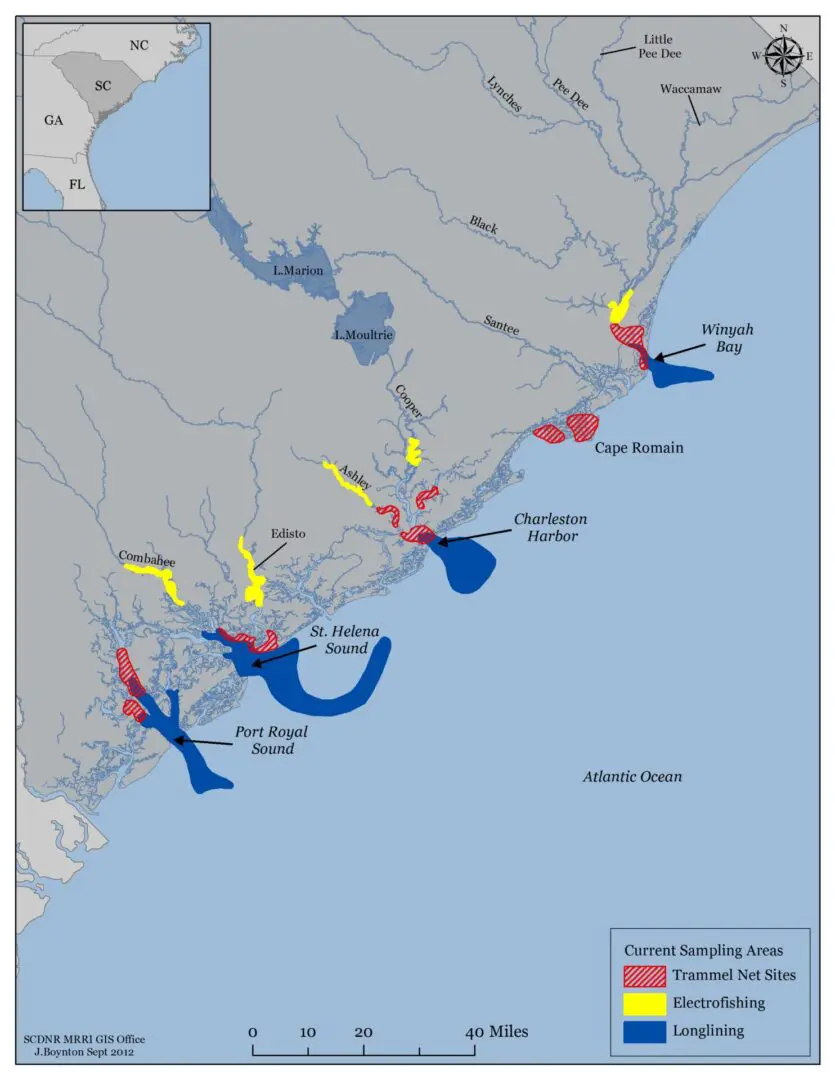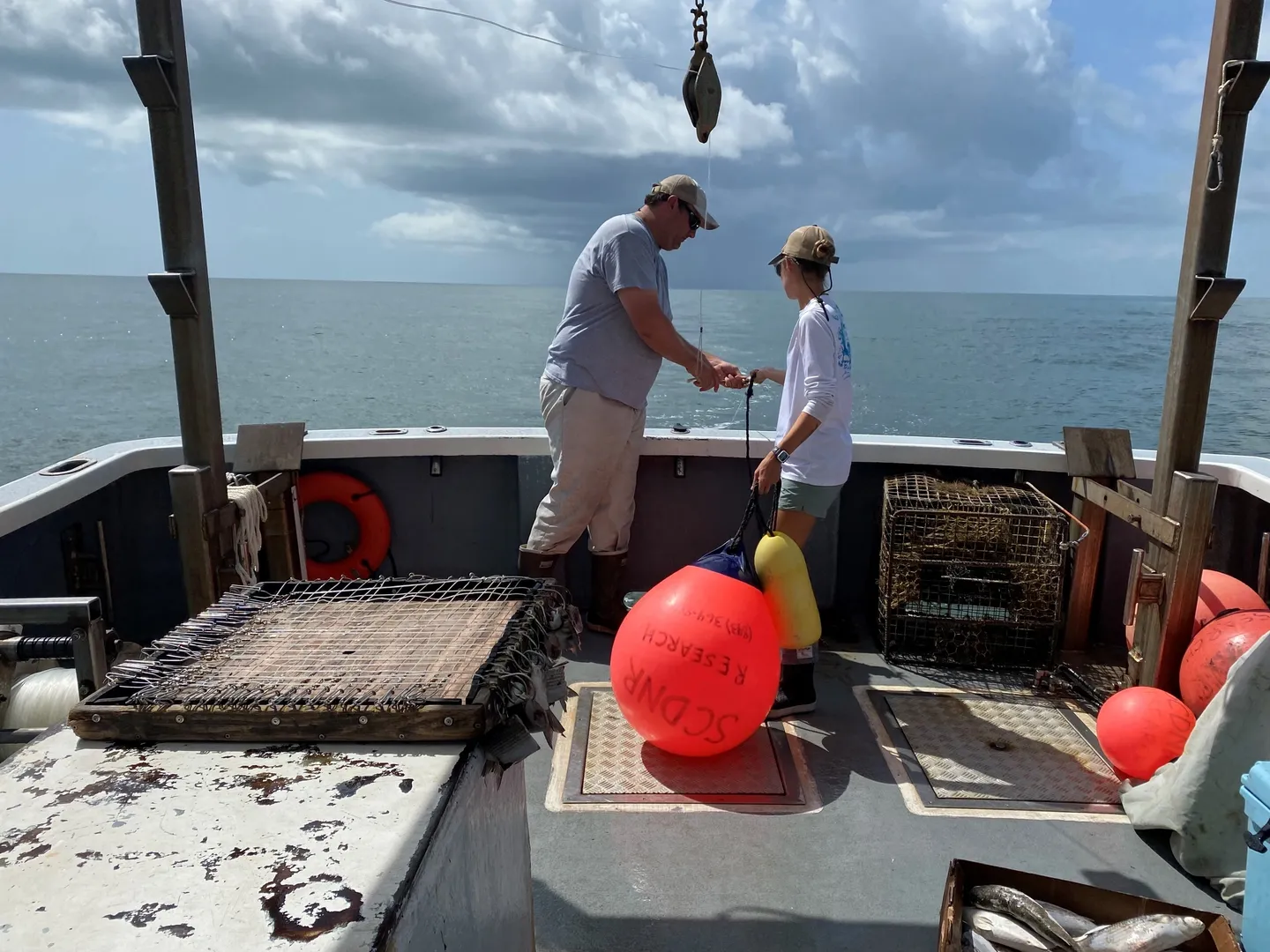Survey Design
Sampling in each of the four strata is conducted during three time periods (August 1 – September 15, September 16 – October 31, November 1 – December 15). Thirty locations are selected at random, during each time period, from a pool of 51 (Winyah Bay), 43 (Charleston Harbor), 81 (St. Helena Sound) and 78 (Port Royal Sound) possible sites per stratum (30 stations/stratum/time period). Figure 1 shows the overlap of SC-LLSsites with two other estuarine sampling projects in SC: an electrofishing survey in brackish water rivers and a trammel net survey in shallow estuarine habitats. The overlap of these surveys allows for individual year classes of red drum to be tracked from the time they are juveniles until they join the adult population.
All sampling occurs during daylight hours using the R/V Silver Crescent, a 52-foot shallow draft vessel equipped with two, 1-mile mainline reels with 40 hooks per set. Hooks are baited with Atlantic mackerel or striped mullet. Since there is emphasis on obtaining red drum and sharks in good condition for tagging, gear soak times are short (30 minutes). Environmental conditions including water depth, air temperature, water temperature, salinity, dissolved oxygen, wind direction, wind speed, and coordinates (lat-longs in degrees, minutes seconds) are also recorded for each station.





